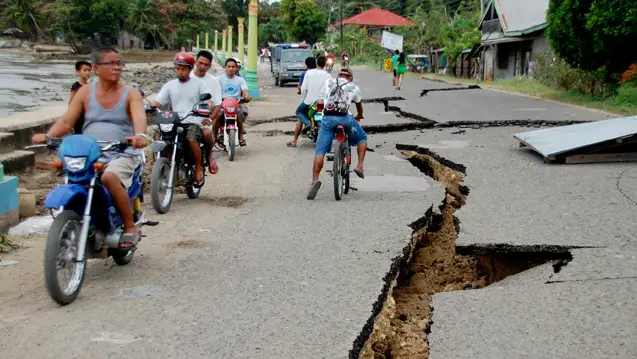The devastating event that occurred on May 31, 2013, has triggered thoughts regarding the link between earthquakes and property. Earthquakes are undoubtedly a priority since there are already many buildings and condominiums built and are still being built. The Philippines is an earthquake-prone country and in saying that, one needs to take caution while trying to invest in realty.
It was during our grade school days when we all learned that the Philippines is a part of the Pacific Ring of Fire where most of the earthquakes and volcanic eruptions in the world occur.
No real estate agent or land developer would voluntarily publicize and discourage consumers from seizing land or obtaining property on an active earthquake fault line or within the vicinity of an active volcano. Thus, prospective buyers need to pay due diligence to do some research on the hazards of a property before considering it a wise investment or worth buying.
Having this knowledge at the back of your mind, a lot of thoughts might be going through your head on how to invest in an earthquake-prone country like the Philippines. Below are some nuggets to keep in mind before investing in an earthquake-prone area.
Learn about the country’s earthquake-prone areas
Nobody can predict the occurrence of earthquakes and tectonic activities, but the government’s Department of Science and Technology provides information on earthquake hazards. This hazard map utilizes Google Earth and you can select detailed information from provincial to the municipal level.
The National Disaster Risk Reduction and Management Council also has hazard maps of reported earthquakes and other disaster alerts that may help you understand the risk of buying a property in a certain area.
Prepare your property for an earthquake
When you bought your residential property, you may have received some information on the property’s vulnerability to earthquakes. An opinion of an expert will also shed light on the condition of your home and provide timely advice on preventive maintenance.
- Reach out to a structural engineer especially if you notice cracks and other forms of damage by tectonic activity.

- Check for earthquake-resistant features. Your first step is to determine whether a building has earthquake-resistant features. It’s important that structures stay up to date with the latest earthquake-proof technology designed to mitigate hazards.
- Advertisement -
Some of the features to check for include cross-bracing, moment-resisting frames, shear walls, trusses, and lightweight roofing. If you have no knowledge of these features, hire an expert to check them out.
- Also, check the strength and the genuineness of materials used in the construction of our property. Track the record of the developer. It is important to be keen on the property’s soundness in terms of structure, re-modify it if necessary.
- Check the cost of earthquake insurance. Be aware that standard home insurance typically does not cover earthquakes. Buying a home in earthquake-prone locations may force you to buy special coverage that protects your home and possessions. You should therefore get quotes for the earthquake insurance before you buy your home.
- Retrofit your acquired home accordingly. If the property you acquired is more than 20 years old, you may need to retrofit your building’s structure to maximize its resistance to earthquakes. Homes are typically constructed to withstand vertical loads such as weight of the house and its contents.
During earthquakes, the ground moves in a linear direction. which builds up lateral loads on the house. Older homes not reinforced to handle lateral loads dissemble under the shifting weight, sliding off the foundation and support beams.
To reinforce your home to withstand lateral movements, you can reinforce it in three different ways:
- Bolt the house to the foundation. This prevents the house from sliding off in the event of an earthquake.
- Brace the cripple walls. In a retrofit, cripple walls are insulated and braced with perpendicular structural plywood shear panels that brace the house in the side-to-side direction.
- Obtain information about the insurance of the property you are about to invest to spare you from any potential regrets, in case an unexpected happens.

Keeping these things in mind helps investors make informed decisions. If you’re apprehensive of pouring investments into earthquake (or flood) prone areas in the Philippines, there is no reason why you should not try other investment channels.
